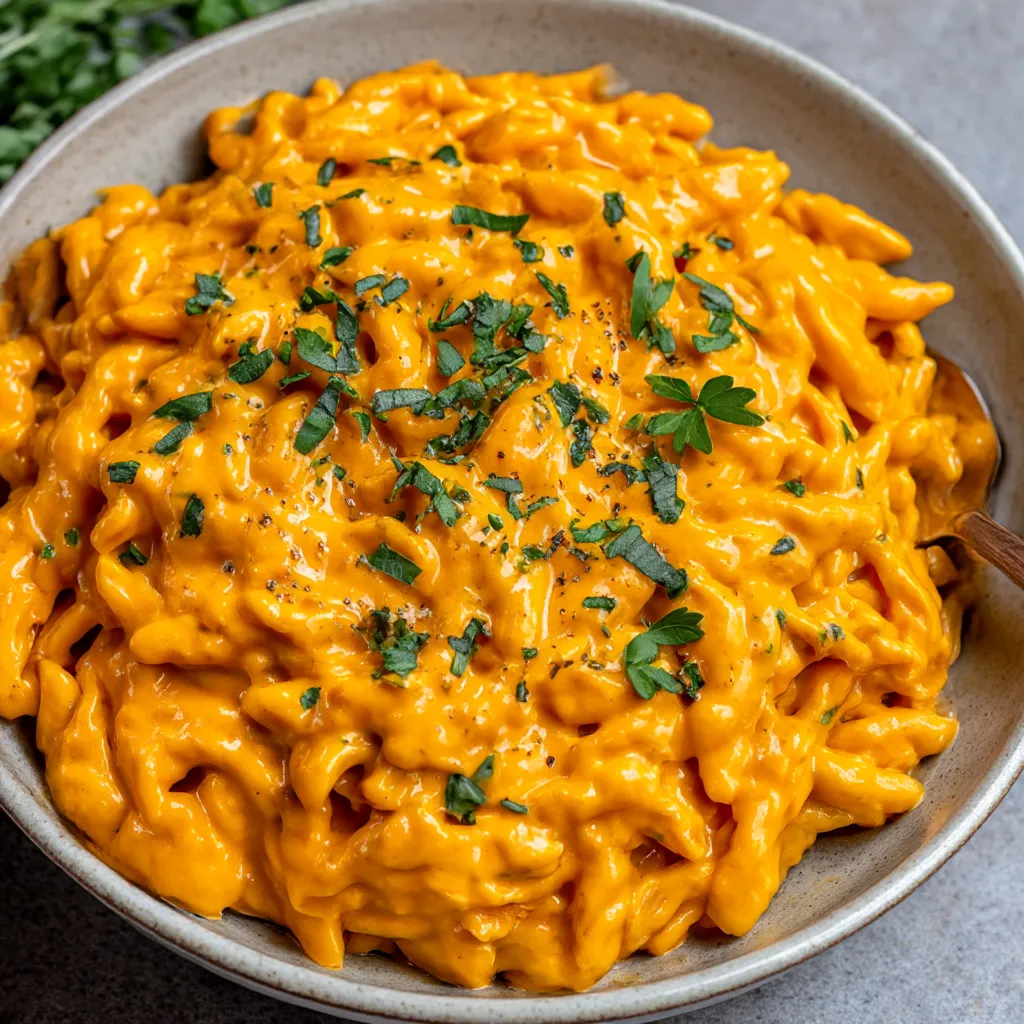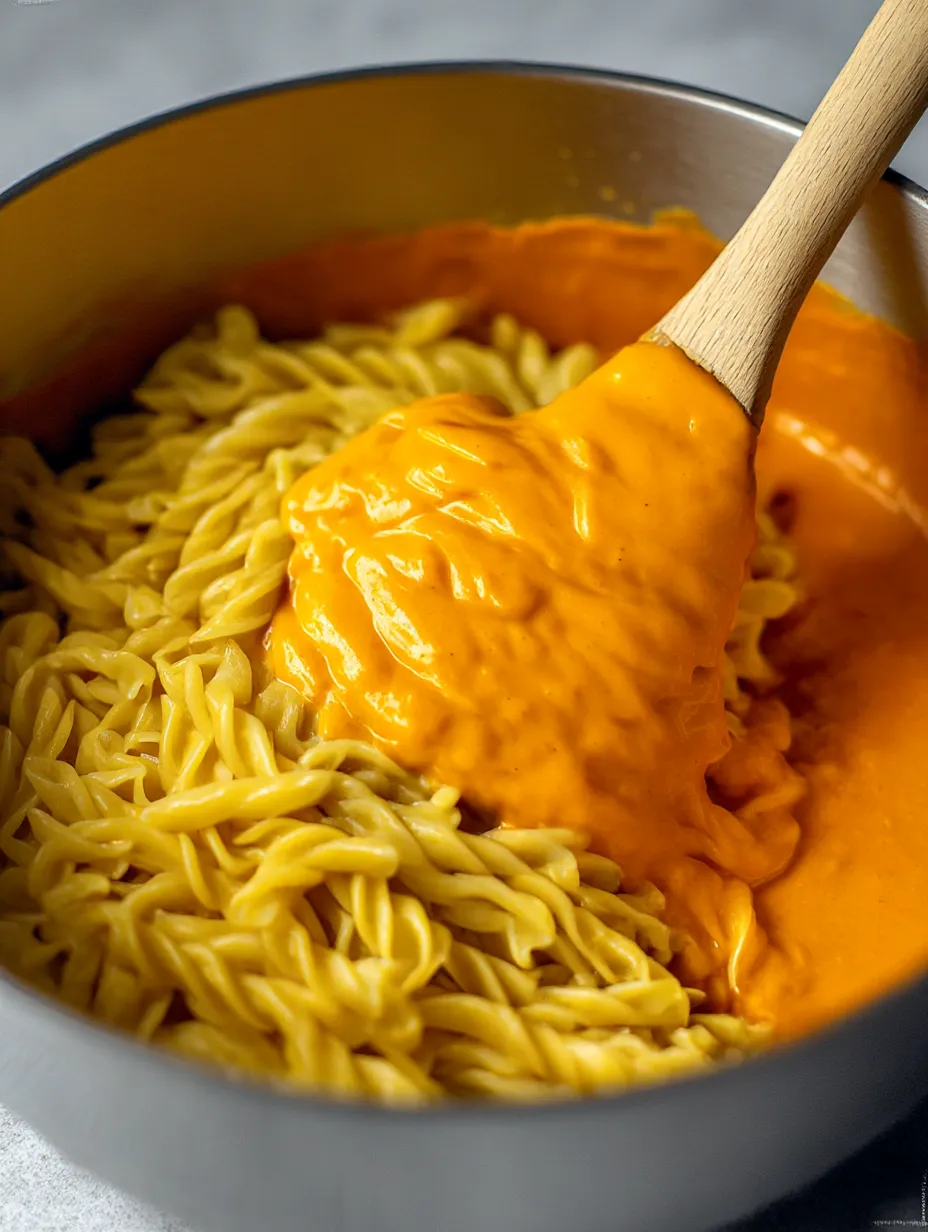 Save
Save
This creamy butternut squash pasta sauce transforms ordinary noodles into a comforting autumn feast that feels indulgent yet comes together with minimal effort. The roasted vegetables blend into a velvety sauce that coats every strand of pasta perfectly, making weeknight dinners feel special without hours in the kitchen.
I created this recipe during a particularly hectic season when my family needed nourishing meals without complicated techniques. The first time I served it, there was complete silence at the dinner table followed by requests for seconds all around.
Ingredients
- Frozen diced butternut squash: Saves precious prep time while delivering the same sweet nutty flavor as fresh
- Fresh tomatoes: Add brightness and natural acidity to balance the sweetness of the squash
- Yellow onion: Provides aromatic depth when roasted until caramelized
- Olive oil: Helps vegetables roast properly and adds richness to the final sauce
- Dried thyme: Complements the earthy sweetness of squash perfectly
- Pasta water: Contains essential starch that helps the sauce cling to your noodles
- Salt and pepper: Enhance all the flavors without overwhelming them
Step-by-Step Instructions
- Prepare for roasting:
- Preheat your oven to 450°F ensuring it reaches full temperature before adding vegetables. Line your baking sheet completely with parchment paper to prevent sticking and make cleanup effortless.
- Arrange vegetables:
- Place the frozen butternut squash directly on the baking sheet without thawing. Add roughly chopped fresh tomatoes and sliced onion, spacing them slightly so heat can circulate around each piece.
- Season generously:
- Drizzle olive oil evenly over all vegetables, then sprinkle with salt, pepper, and dried thyme. Use your hands or a spatula to toss everything thoroughly, ensuring each piece gets coated with oil and seasonings.
- Roast to perfection:
- Bake at 450°F for exactly 20 minutes. The high heat caramelizes the natural sugars in the vegetables, creating complex flavor. Look for slightly charred edges on the onions and softened squash.
- Cook pasta simultaneously:
- While vegetables roast, bring a large pot of salted water to a rolling boil. Cook your chosen pasta according to package directions until al dente. Before draining, capture 1/3 cup of the starchy cooking water.
- Blend the sauce:
- Transfer hot roasted vegetables directly to a blender along with the reserved pasta water. Blend on high speed until completely smooth, about 1 minute. The heat from the vegetables helps create an immediately silky texture.
- Combine and serve:
- Pour the vibrant orange sauce over drained pasta and toss gently until every strand is coated. Serve immediately while hot, topping with freshly grated parmesan cheese if desired.

The secret to this sauce is allowing the vegetables to develop deep caramelized flavors in the oven. My family particularly loves the subtle sweetness of the butternut squash which makes even the simplest weeknight pasta feel special. Watching my youngest child eagerly twirl pasta covered in vegetable sauce never fails to make me smile.
Make Ahead Options
This versatile sauce can be prepared up to three days in advance and stored in an airtight container in the refrigerator. When ready to use, gently reheat on the stovetop adding a splash of water if needed to reach your desired consistency. For longer storage, freeze portions in silicone ice cube trays then transfer to freezer bags once solid. These sauce cubes can be defrosted and stirred into freshly cooked pasta for up to three months.
Customization Ideas
The beauty of this recipe lies in its adaptability. Add a pinch of red pepper flakes for gentle heat or stir in fresh sage leaves before blending for an herbaceous twist. For a protein boost, mix in cooked Italian sausage, shredded rotisserie chicken, or white beans after saucing the pasta. Plant based eaters can sprinkle nutritional yeast on top for a cheesy flavor without dairy. Each variation maintains the essential comfort factor while offering endless possibilities.
Nutritional Benefits
Beyond its comforting taste, this sauce delivers impressive nutrition. Butternut squash provides vitamin A for eye health, vitamin C for immunity, and potassium for muscle function. The natural fiber helps create satisfaction while tomatoes contribute lycopene, a powerful antioxidant. Unlike many cream based pasta sauces, this version remains heart healthy with minimal saturated fat. Using whole grain pasta further enhances the nutritional profile by adding additional fiber and protein.
Recipe FAQs
- → Can I use fresh butternut squash instead of frozen?
Yes, you can substitute fresh butternut squash. Peel, seed, and cube about 1 pound of fresh squash. You may need to increase the roasting time by 5-10 minutes to ensure it's tender enough to blend smoothly.
- → How do I store leftover butternut squash sauce?
Store leftover sauce in an airtight container in the refrigerator for up to 4 days. The sauce can also be frozen for up to 3 months. Thaw overnight in the refrigerator and reheat gently on the stovetop, adding a splash of water or broth if needed to reach desired consistency.
- → What pasta shapes work best with this sauce?
This thick, creamy sauce works wonderfully with shapes that can hold sauce well, such as penne, rigatoni, farfalle, or fettuccine. The sauce's velvety texture also pairs nicely with whole wheat or legume-based pasta varieties.
- → Can I make this sauce dairy-free?
This sauce is naturally dairy-free! Just be sure to use plant-based parmesan for topping if needed. The creamy texture comes from the blended butternut squash rather than cream or cheese in the sauce itself.
- → What herbs can I substitute for thyme?
Sage, rosemary, or Italian seasoning blend would all work beautifully with the butternut squash flavor profile. Fresh herbs like basil or sage leaves can also be added at the end for a bright finish.
- → How can I add more protein to this dish?
For added protein, consider serving with grilled chicken, roasted chickpeas, or sautéed shrimp. You can also stir in cooked white beans or lentils directly into the sauce before serving.
